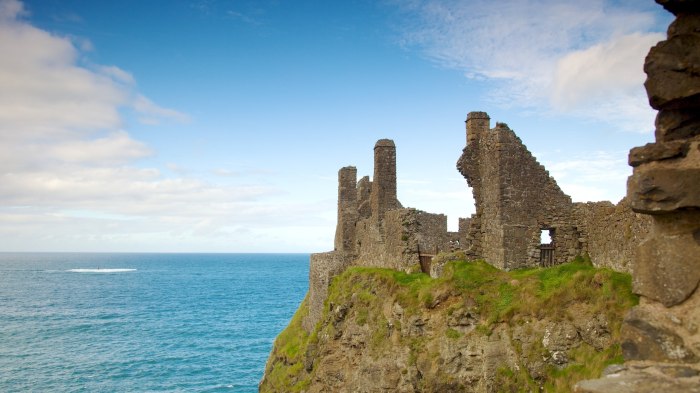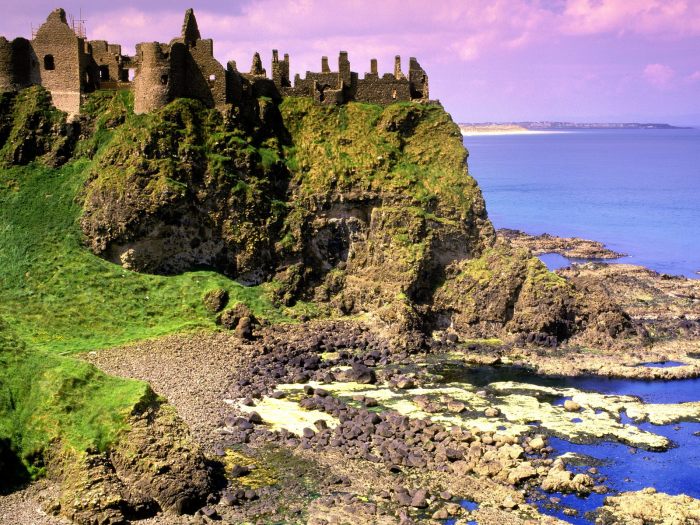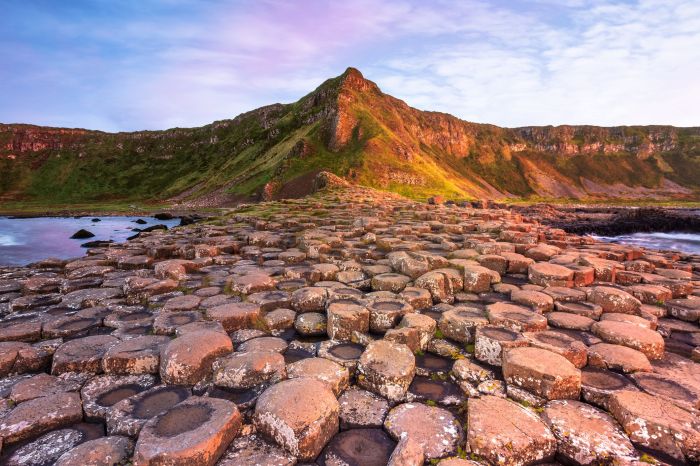Antrim, a name that echoes through history and resonates with natural splendor, beckons us to delve into its captivating tapestry. From the rugged beauty of its coastline to the tranquility of its castle gardens, Antrim unveils a symphony of experiences that ignite the imagination and leave an enduring mark on the soul.
Throughout the ages, Antrim has played a pivotal role in shaping the destiny of its region. From its significance in Irish mythology to its contributions to the Gaelic Athletic Association, Antrim’s story is intertwined with the threads of human endeavor and cultural heritage. As we explore its diverse facets, we uncover a treasure trove of historical landmarks, natural wonders, and cultural traditions that continue to captivate and inspire.
Antrim County

Antrim County is a county located in the northwestern Lower Peninsula of Michigan, United States. It is bordered by Grand Traverse Bay to the west, Charlevoix County to the north, Otsego County to the east, and Kalkaska County to the south. The county seat is Bellaire.
Antrim County was established in 1840 from parts of Mackinac and Chippewa counties. It is named after County Antrim in Northern Ireland. The county’s early economy was based on logging and agriculture. In the late 19th century, tourism became an important industry. Today, Antrim County is a popular destination for tourists and outdoor enthusiasts.
Antrim Coast and Glens

The Antrim Coast and Glens is an area of outstanding natural beauty in Northern Ireland, renowned for its dramatic coastline, scenic landscapes, and rich geological formations. It stretches along the northern coast of County Antrim, from the town of Carrickfergus in the east to the village of Ballycastle in the west.
The area is characterized by its rugged coastline, which features towering cliffs, sandy beaches, and secluded coves. The coastline is home to a number of geological formations, including the Giant’s Causeway, a UNESCO World Heritage Site, which is made up of thousands of hexagonal basalt columns.
Historical and Cultural Significance
The Antrim Coast and Glens has a long and rich history, dating back to prehistoric times. The area was home to the Neolithic people, who left behind a number of megalithic tombs and standing stones. The area was also home to the Celts, who left behind a number of hillforts and other archaeological sites.
Antrim, known for its stunning natural beauty, offers a plethora of opportunities for discerning travelers seeking an extraordinary experience. To enhance your sojourn, consider exploring luxury travel tips that cater to discerning travelers, offering insights into exclusive accommodations, exquisite dining, and unforgettable activities.
As you delve into the hidden gems of Antrim, these tips will elevate your journey to new heights of indulgence.
The Antrim Coast and Glens has also played a significant role in Irish mythology and folklore. The area is said to be the home of the legendary giant Finn McCool, and there are a number of places in the area that are associated with him, including the Giant’s Causeway and the Giant’s Ring.
Antrim, Northern Ireland, boasts breathtaking landscapes and rich history. However, it also offers an unexpected adventure beneath the waves. Explore scuba diving locations off the Antrim coast, where crystal-clear waters reveal shipwrecks, colorful marine life, and underwater caves. Discover the hidden depths of this captivating region and immerse yourself in the beauty of its submerged world.
Tourism Industry
The Antrim Coast and Glens is a popular tourist destination, attracting visitors from all over the world. The area is home to a number of tourist attractions, including the Giant’s Causeway, the Carrick-a-Rede Rope Bridge, and the Dunluce Castle. The area is also a popular destination for walking, hiking, and cycling.
The tourism industry has a significant impact on the local economy. In 2019, the tourism industry in Northern Ireland generated £1.1 billion in revenue, and the Antrim Coast and Glens is one of the most popular tourist destinations in the region.
Antrim, Northern Ireland
Antrim is a historic town in County Antrim, Northern Ireland, situated on the banks of the Six Mile Water River. It boasts a rich history dating back to the Middle Ages and has played a significant role in the development of Northern Ireland.
Antrim’s architecture is a blend of traditional Irish and Georgian styles. Notable buildings include Antrim Castle, a 17th-century fortification, and St. Patrick’s Church of Ireland, a 19th-century Gothic Revival church. The town also features several historic pubs and inns, adding to its charming atmosphere.
Antrim has a vibrant cultural heritage. It is home to the Antrim Drama Festival, one of the longest-running amateur drama festivals in Ireland. The town also hosts various art exhibitions and musical performances throughout the year.
Role in the Troubles and Peace Process
During the Troubles, Antrim was affected by sectarian violence and political unrest. The town was the site of several bombings and shootings, and its population was divided along sectarian lines.
Following the signing of the Good Friday Agreement in 1998, Antrim has played a key role in the peace process. The town has become a symbol of reconciliation and cross-community cooperation.
Economic and Social Challenges
Like many towns in Northern Ireland, Antrim faces economic and social challenges. The town’s traditional industries, such as linen manufacturing and agriculture, have declined in recent decades.
Antrim is also affected by high levels of unemployment and poverty. The town is working to address these challenges through economic development initiatives and community support programs.
Despite these challenges, Antrim remains a resilient and vibrant town. Its rich history, cultural heritage, and commitment to peace make it an important part of Northern Ireland’s present and future.
Antrim GAA

Antrim GAA is the Gaelic Athletic Association in County Antrim, Northern Ireland. It is responsible for promoting and developing Gaelic games, including Gaelic football, hurling, camogie, and handball, in the county.
History and Structure, Antrim
Antrim GAA was founded in 1887 and is one of the oldest GAA county boards in Ireland. The county is divided into five divisions: Antrim, Belfast, Carnlough, Dunloy, and Loughgiel. Each division has its own clubs and teams that compete in various GAA competitions.
Antrim, a county in Northern Ireland, is renowned for its captivating history and stunning landscapes. For those seeking an intriguing glimpse into the darker side of history, a visit to the Alcatraz East Crime Museum in Pigeon Forge, Tennessee, is highly recommended.
This museum showcases a fascinating collection of artifacts and exhibits related to notorious criminals and infamous crimes. After exploring the depths of criminal history at Alcatraz East, Antrim’s rich cultural heritage and natural beauty await your return, offering a refreshing contrast to the museum’s captivating yet somber atmosphere.
Achievements
Antrim GAA teams have enjoyed considerable success over the years. The county’s senior Gaelic football team has won the Ulster Senior Football Championship 14 times, most recently in 2016. The team has also competed in the All-Ireland Senior Football Championship on several occasions, reaching the final in 1951.
The county’s senior hurling team has also enjoyed success, winning the Ulster Senior Hurling Championship on 10 occasions, most recently in 2017. The team has also competed in the All-Ireland Senior Hurling Championship, reaching the final in 1989.
Notable Players
Antrim GAA has produced a number of notable players over the years. Some of the most famous players include:
- Seán McGreevy (Gaelic football)
- Patrick Bradley (Gaelic football)
- Ciarán Barr (hurling)
- Neil McManus (hurling)
- Antoinette Loughran (camogie)
Cultural and Social Significance
Antrim GAA plays an important cultural and social role in the community. The games provide a sense of identity and belonging for many people in the county. The GAA also helps to promote Irish culture and language.
Antrim Castle Gardens

Antrim Castle Gardens, nestled in the heart of Northern Ireland’s County Antrim, is a captivating tapestry of horticultural beauty and historical significance. Its origins can be traced back to the 17th century when Sir Hugh Clotworthy, a prominent figure in the area, commissioned the construction of Antrim Castle. Over the centuries, the gardens surrounding the castle have evolved into a magnificent spectacle, showcasing a diverse array of botanical collections and architectural features.
The gardens are renowned for their exceptional botanical diversity, with an extensive collection of over 1,000 species of plants, including rare and exotic varieties. One of the highlights is the National Rose Collection, featuring over 300 varieties of roses in a vibrant array of colors and fragrances. The gardens also boast a stunning collection of rhododendrons, azaleas, camellias, and magnolias, creating a kaleidoscope of colors and textures throughout the seasons.
Beyond its botanical treasures, Antrim Castle Gardens is also a testament to the architectural brilliance of its time. The original castle, a magnificent example of Scottish baronial architecture, has been carefully preserved and restored, providing a glimpse into the grandeur of bygone eras. The gardens are adorned with elegant fountains, statues, and bridges, creating a harmonious blend of natural beauty and human artistry.
The gardens have played a pivotal role in horticulture and landscape architecture, serving as a source of inspiration and experimentation for generations of gardeners and designers. The National Rose Collection, in particular, has been instrumental in the development of new rose varieties and has contributed significantly to the advancement of rose cultivation techniques.
In addition to its horticultural significance, Antrim Castle Gardens also offers a wealth of educational and recreational opportunities. Guided tours provide visitors with insights into the history, design, and botanical wonders of the gardens. The gardens also host a variety of workshops and events throughout the year, catering to all levels of gardening enthusiasts.
For nature lovers and those seeking a tranquil escape, Antrim Castle Gardens is an idyllic destination. The serene atmosphere, coupled with the breathtaking beauty of its flora and fauna, creates an unforgettable experience for visitors of all ages.
Last Point
As we bid farewell to Antrim, its allure lingers in our hearts and minds. This extraordinary place has left an indelible imprint, reminding us of the enduring power of history, the majesty of nature, and the resilience of the human spirit. Whether it is the breathtaking vistas of its coastline, the architectural grandeur of its castle, or the warmth of its people, Antrim has woven its way into the fabric of our memories, forever etching itself as a destination that transcends time and captivates the imagination.
Q&A
What is the significance of Antrim in Irish history?
Antrim holds a prominent place in Irish mythology and folklore, with many legends and tales associated with its landscapes and landmarks.
What are the key attractions of the Antrim Coast and Glens?
The Antrim Coast and Glens boasts stunning geological formations, including the Giant’s Causeway, as well as picturesque landscapes and charming coastal towns.
What is the role of Antrim GAA in the community?
Antrim GAA plays a vital role in fostering a sense of community and cultural identity through the promotion of Gaelic sports and cultural activities.